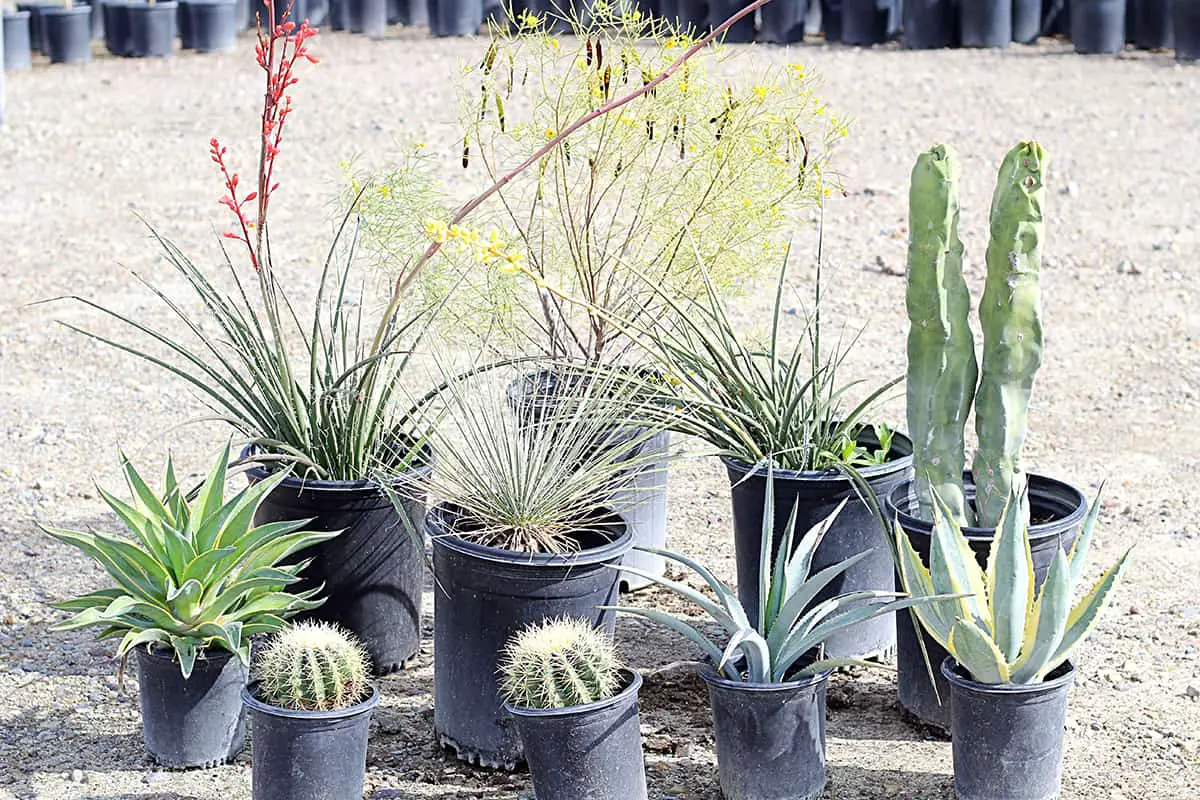Ever returned from a trip to find your houseplants struggling for life? Enter the cactus, a champion of the drought-tolerant plant world, thriving on your forgetfulness and infrequent watering. This article introduces you to more such resilient houseplants, perfect for those who love greenery but might not have the time or memory for regular watering schedules.
Table of Contents
- Sansevieria (Snake Plant)
- Zamioculcas Zamiifolia (ZZ Plant)
- Aloe Vera
- Crassula Ovata (Jade Plant)
- Sedum Morganianum (Burro’s Tail)
- Echeveria
- Haworthia
- Kalanchoe Blossfeldiana
- Sempervivum (Hens And Chicks)
- Pachira Aquatica (Money Tree)
- Schlumbergera (Christmas Cactus)
- Peperomia Spp.
- Agave Spp.
- Epiphyllum (Orchid Cactus)
- Gasteria
- Rhipsalis Baccifera (Mistletoe Cactus)
- Adenium Obesum (Desert Rose)
Sansevieria (Snake Plant)
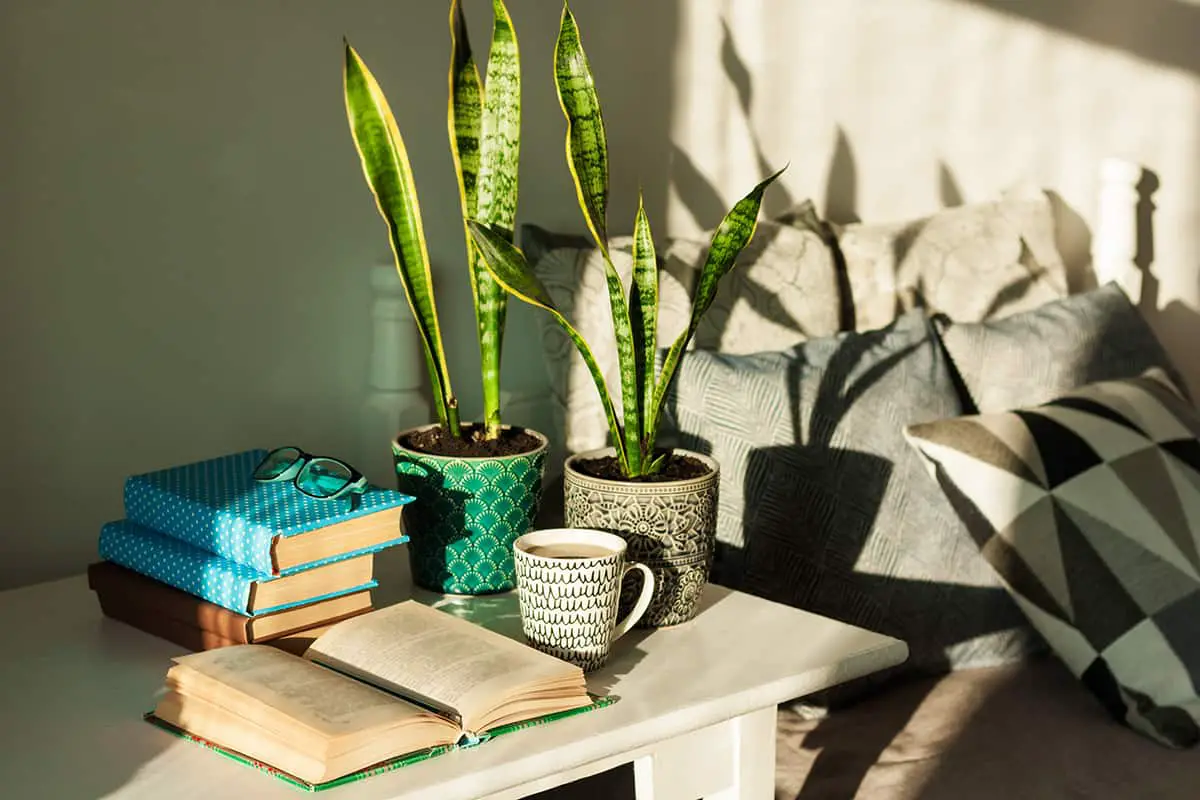
Sansevieria, also known as Snake Plant, is a resilient choice for your home. It thrives in indoor environments. You’ll find it requires minimal water, making it ideal for those who prefer low-maintenance houseplants. These plants adapt well to a range of lighting conditions, from low to bright light.
Snake Plant’s care routine is simple. Water sparingly, only when the soil feels dry. Overwatering can harm it more than neglect. Your Snake Plant prefers dry, well-draining soil. It rarely needs repotting due to slow growth.
This plant isn’t fussy about light or temperature. It survives in dimly lit corners or near a sunny window. It also withstands varying temperatures indoors but dislikes the cold.
Besides being tolerant to drought, it also purifies indoor air. Studies suggest it removes toxins like formaldehyde from the air. Its upright, sword-like leaves add a touch of architectural beauty to any space.
Zamioculcas Zamiifolia (ZZ Plant)
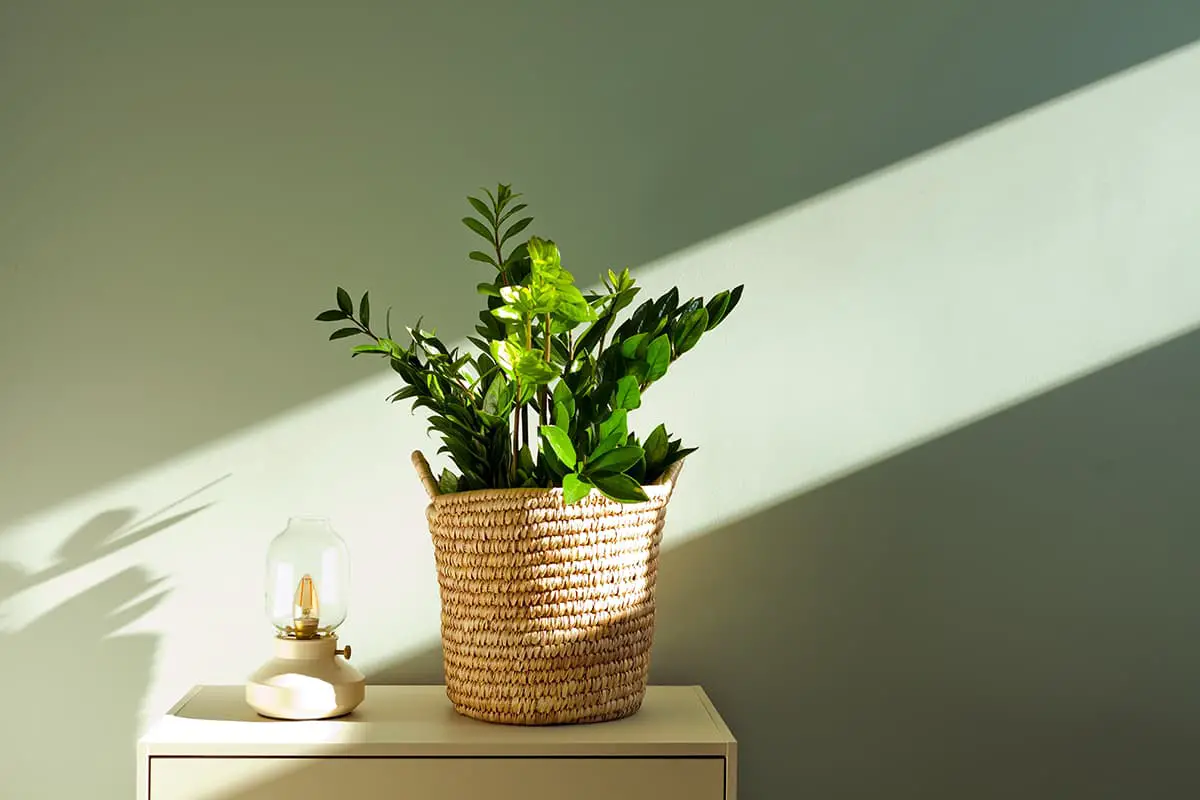
Zamioculcas zamiifolia, commonly known as the ZZ plant, is a robust choice for your home. Native to eastern Africa, it’s renowned for its ability to withstand drought. The ZZ plant thrives with minimal water.
Its waxy, green leaves reflect a natural shine, adding a touch of elegance to your indoor spaces. Care for the ZZ plant is simple. It requires low light, making it perfect for rooms with few windows. You should water the soil only when it feels dry to the touch.
Remarkably, the ZZ plant can reach heights of 2 to 4 feet. It grows slowly, which means it won’t outgrow its space quickly. Its soil should be well-draining; a mix of organic and sandy components is ideal.
The ZZ plant also has air-purifying qualities, making it not just a decorative but a functional addition to your home. To keep your ZZ plant healthy, avoid overwatering, which can lead to root rot.
Aloe Vera
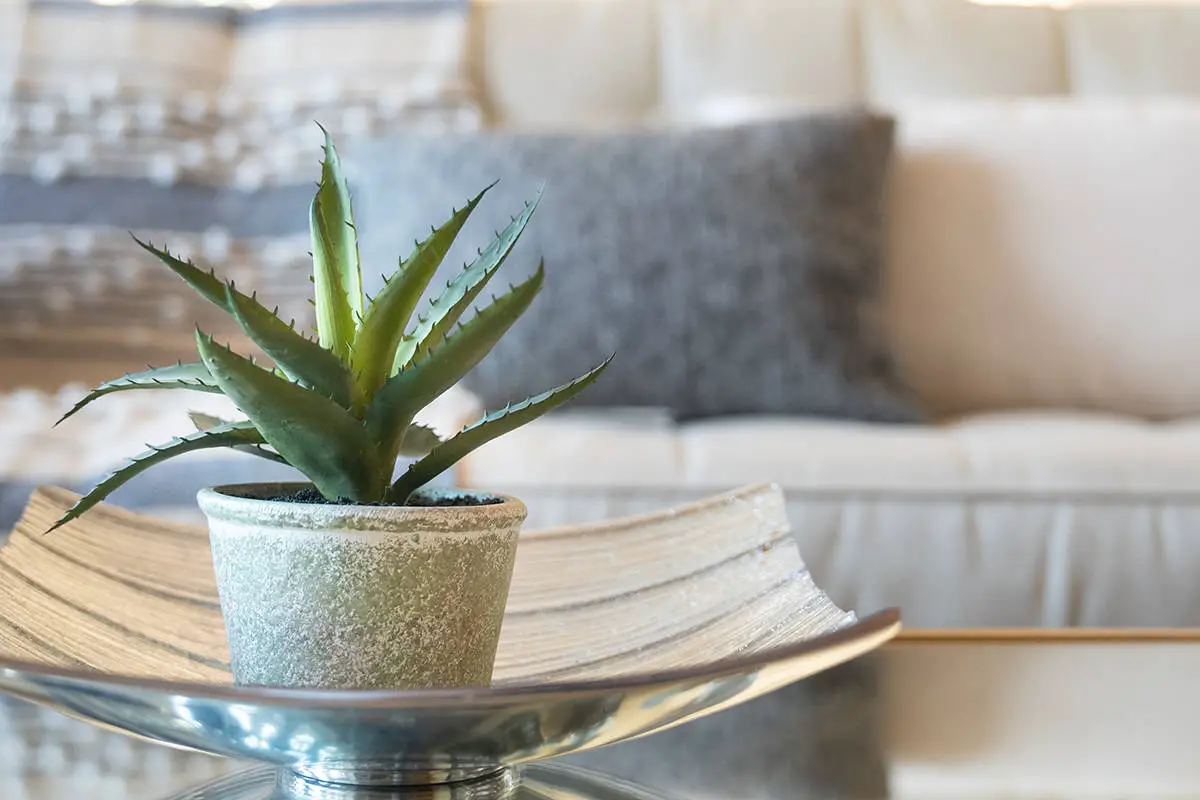
Aloe Vera thrives as a drought-tolerant houseplant, perfect for your indoor spaces. Its adaptability allows it to grow well with minimal water, making it ideal for busy or forgetful gardeners. This succulent requires bright light, though it prefers some protection from intense direct sun.
You should water your Aloe Vera only when the soil feels dry. Use well-draining soil to prevent root rot. Keep the plant in warm conditions and average home humidity.
Its fleshy leaves store water, allowing it to endure dry periods. If you notice leaves drooping, this could indicate a need for more light. However, be wary of overwatering, as it is the common cause of Aloe’s downfall.
When properly cared for, Aloe Vera can bloom, producing yellow or red flowers. These blooms are more likely when the plant is outdoors. Indoors, achieving such a display is rare. Aloe Vera also offers a practical benefit: the gel from the leaves is known for its skin-soothing properties.
Crassula Ovata (Jade Plant)
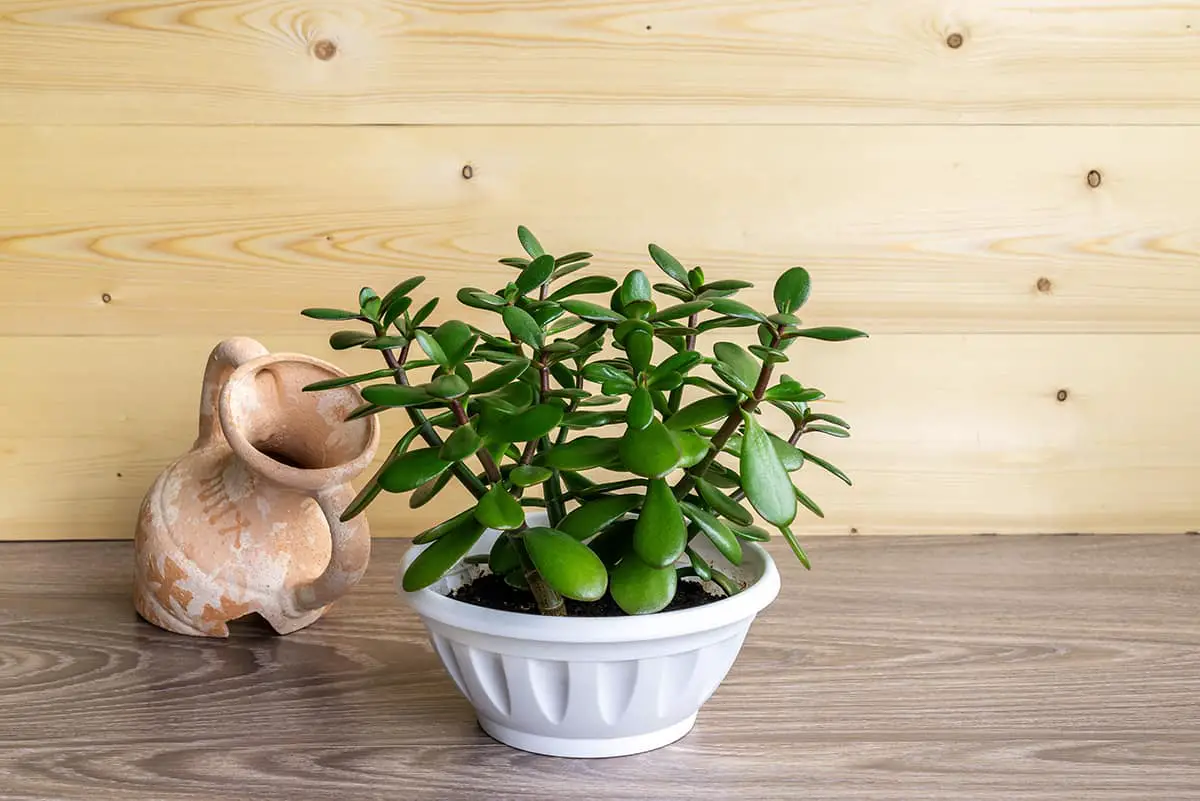
As a drought-tolerant houseplant, the jade plant demands little watering. Your jade plant prefers a sunny window. It’s best to let the soil dry out between waterings.
Crassula ovata is not only attractive but also resilient. It grows into a tree-like structure over time, which adds to its beauty. Keeping the plant in moderate temperatures and providing adequate sunlight promotes healthy growth.
Handling a jade plant requires care to avoid damage. While repotting, be gentle with its root system. This ensures your plant stays stable and continues to flourish.
Sedum Morganianum (Burro’s Tail)
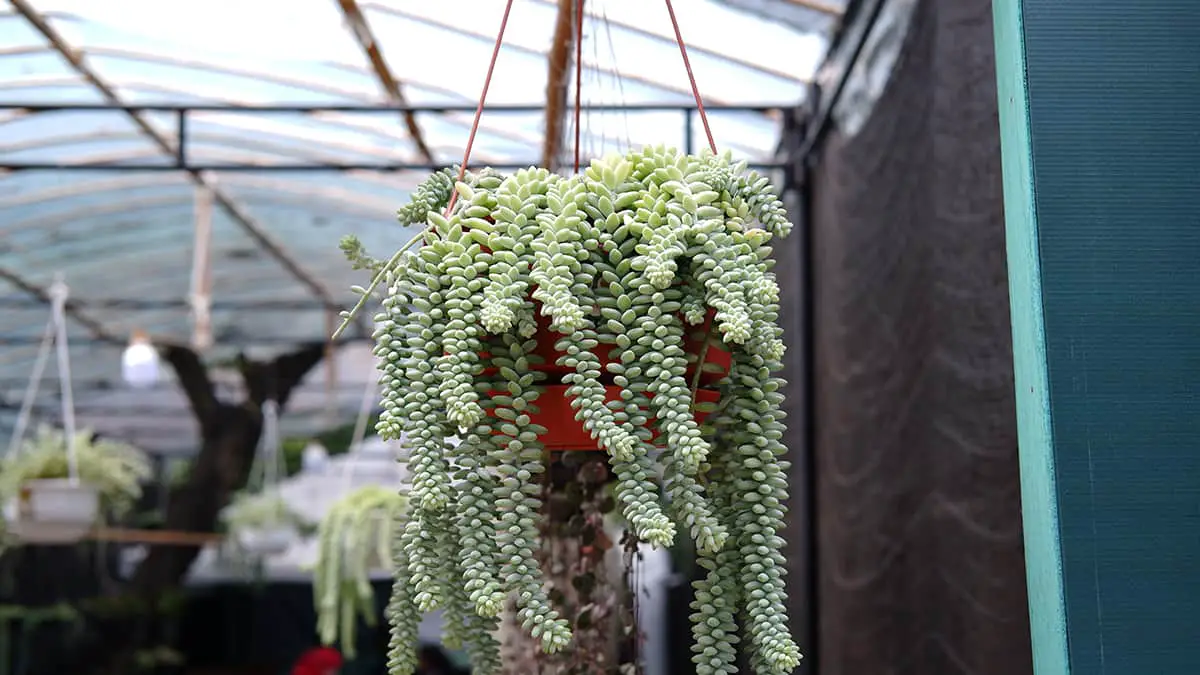
Sedum Morganianum, commonly known as Burro’s Tail, is a succulent you’ll love for your home. Its trailing stems are easy to spot, growing up to 24 inches long. You’ll notice the fleshy, blue-green leaves that drape over the sides of pots. As a plant that prefers bright light, place it near a window where it gets plenty of sunshine.
Your Burro’s Tail is quite drought-tolerant. It stores water in its leaves, making it ideal for busy individuals. You won’t need to water it too often. Allow the soil to dry out completely between watering sessions for the best care. Its low-maintenance nature is perfect if you often forget to water your plants.
This plant thrives in high light environments. A southern exposure windowsill is often the perfect spot. If you’re keeping it outdoors, make sure to bring it inside when the temperature drops below 40 degrees Fahrenheit to prevent damage.
Echeveria
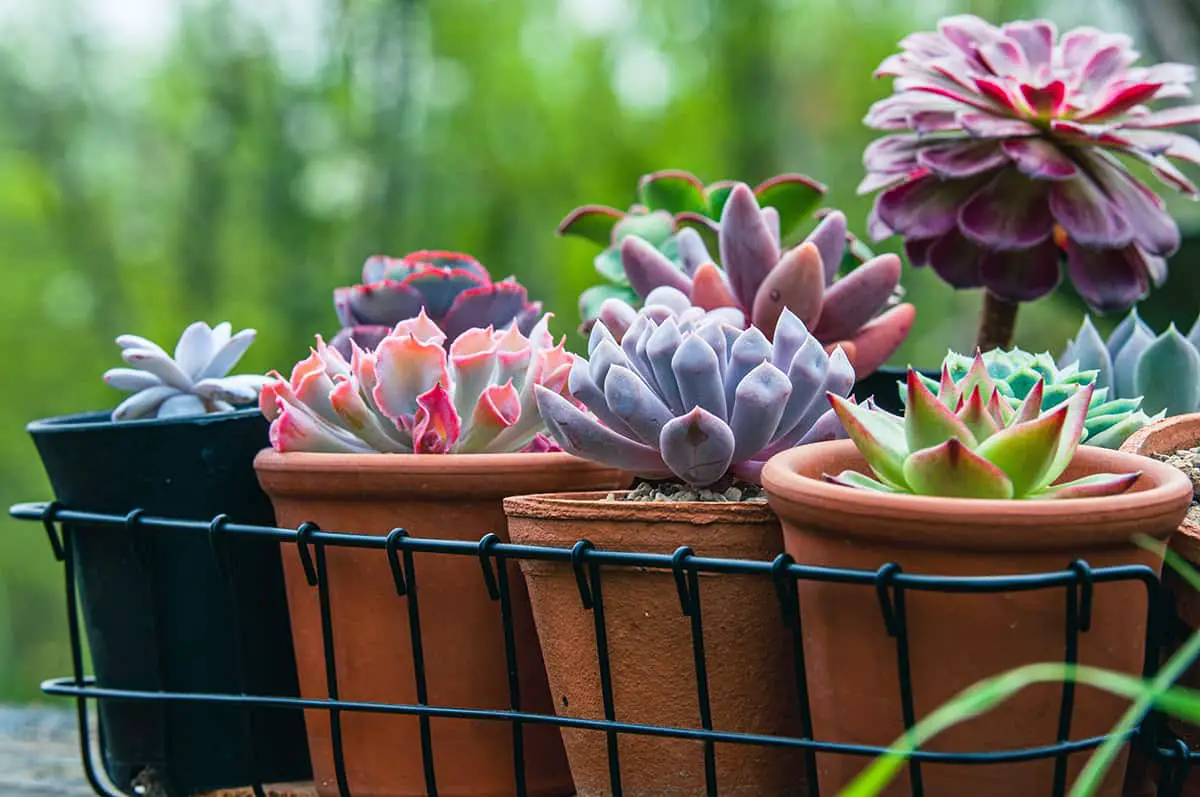
Echeveria is a type of drought-tolerant houseplant well-suited for your indoor space. With nearly 200 species, these succulents are known for their attractive rosette forms and variety of colors. Their resilience makes them ideal for beginners.
These plants thrive in well-drained soil under full to partial sun. You’ll find that with minimal water, they still retain their vibrant appearance. It’s the perfect plant if you seek low maintenance greenery.
The leaves of Echeveria can range from blue-green to deep reds and purples. They often produce offsets or “pups” which you can use to propagate new plants. Their adaptability means they fit well in different design schemes, from rock gardens to terrariums.
During summer, some Echeveria species blossom with striking flowers that can attract pollinators like bees and hummingbirds. Ensuring good air circulation helps keep them healthy.
Haworthia
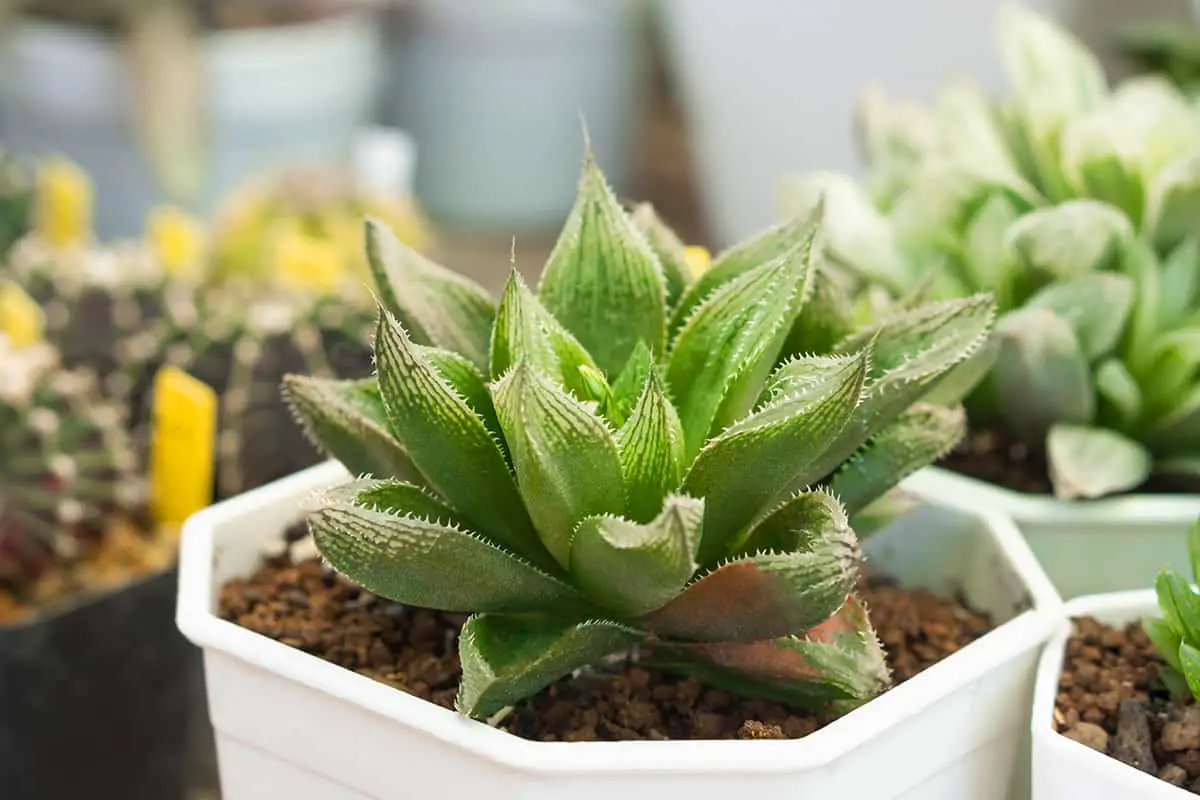
Haworthia are succulents you can rely on to withstand dry indoor environments. These South African natives typically have fleshy, green leaves often adorned with patterns of white bumps or stripes. You can recognize Haworthia by their rosette shape and small size, which rarely exceeds 6 inches in height or diameter.
Your Haworthia will do best in bright, indirect light, but it can cope with lower light levels. This versatility makes it suitable for various spots in your home. When you water your plant, allow the soil to dry out completely between waterings. Overwatering can lead to root rot, so it’s crucial to ensure proper drainage.
These plants are also known for their resilience. You don’t need to worry about them if you forget to water now and then. Their tough nature translates into less work for you and makes Haworthia an excellent choice for busy plant lovers.
Kalanchoe Blossfeldiana
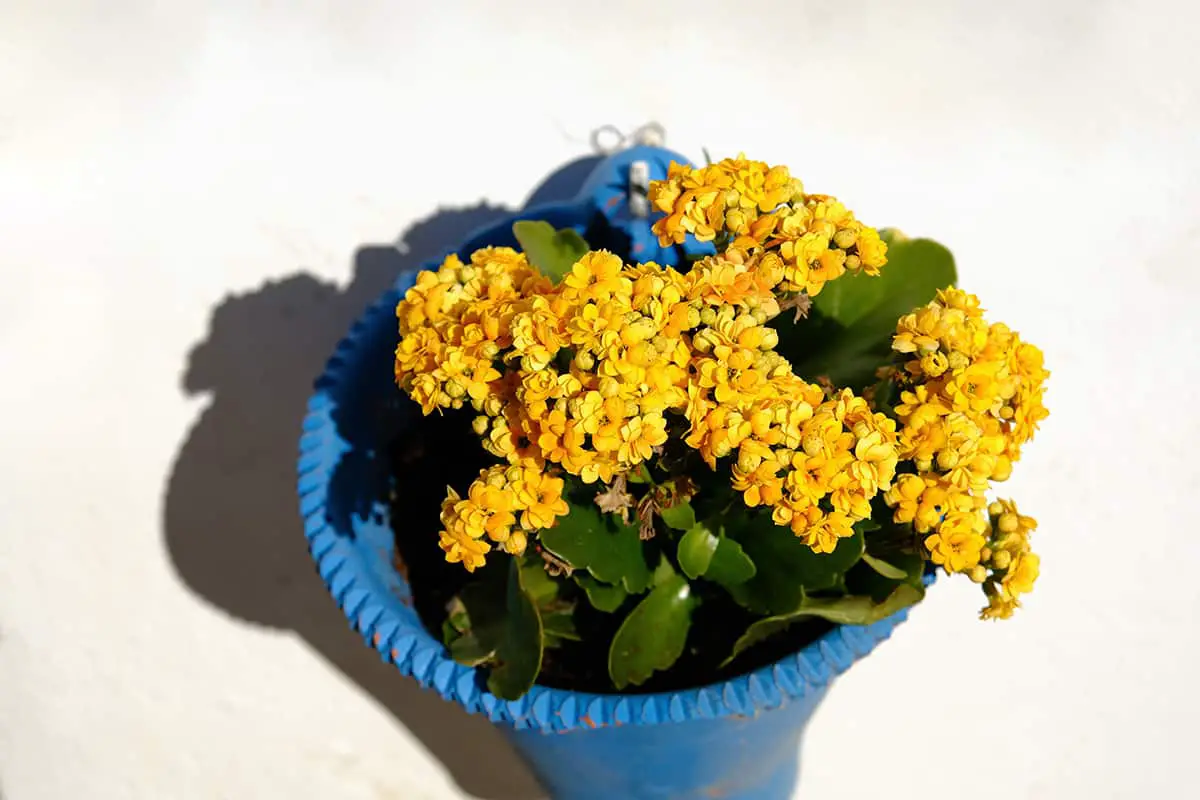
Kalanchoe Blossfeldiana thrives with minimal care. You’ll appreciate its waxy, vibrant flowers. Keep it in bright, indirect sunlight for the best growth. Ensure the soil is well-drained.
Infrequent watering suits this succulent. Allow the soil to dry out between watering. Overwatering is a common mistake; be cautious.
Kalanchoe Blossfeldiana enjoys warm conditions. Protect it from frost to prevent damage. It’s moderately salt tolerant, a plus for coastal gardeners.
Kalanchoe Blossfeldiana favors sandy, open, and light soils. Avoid heavy, water-retentive substrates for this drought-tolerant plant.
For fertilization, feed lightly with fertilizer once a year. Excessive feeding is unnecessary and can be detrimental.
Sempervivum (Hens And Chicks)
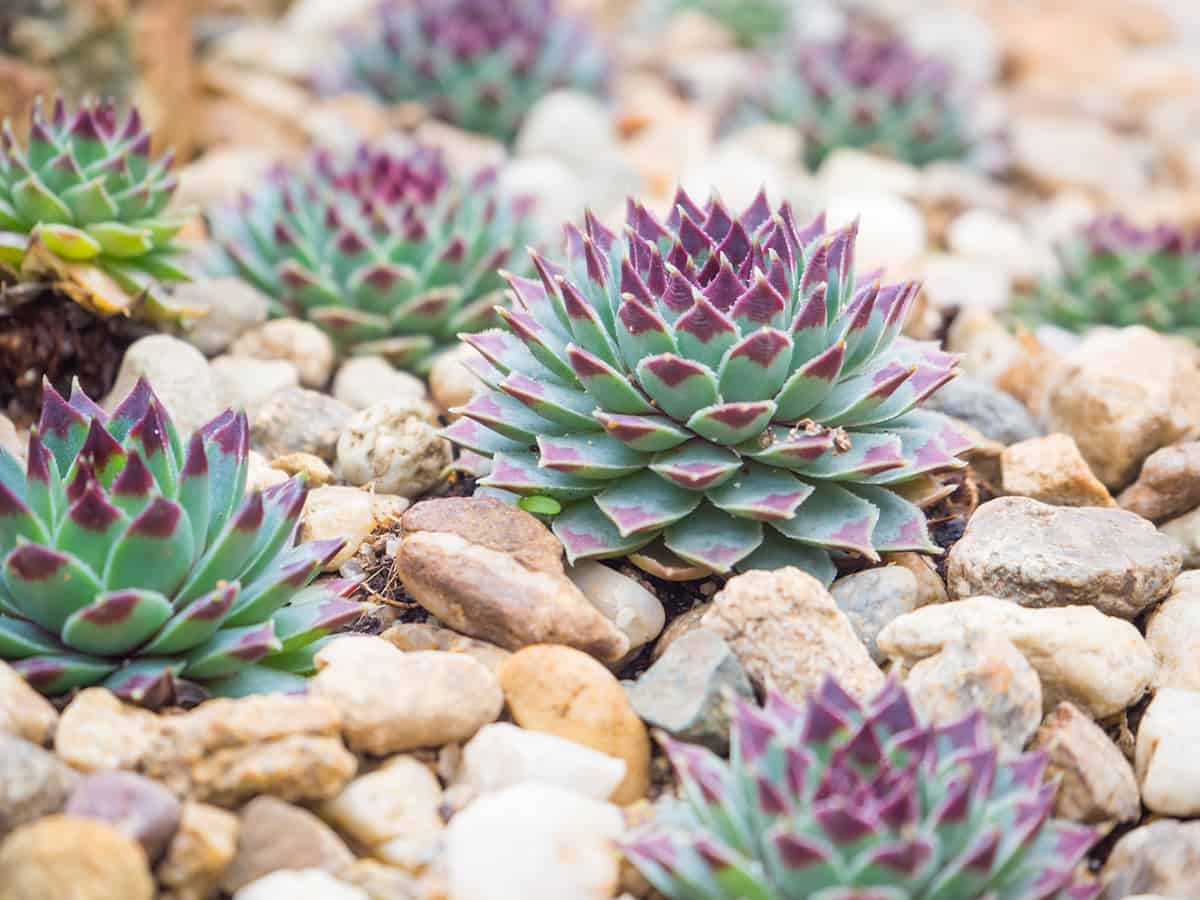
Sempervivum, commonly known as ‘Hens and Chicks’, thrives in dry conditions. These hardy plants prefer well-draining soil. They have a unique look with rosettes that resemble hens and smaller offshoots, or chicks.
These perennials need little water. Make sure to avoid overwatering to prevent root rot. They are perfect if you forget to water your plants. Sempervivum plants spread by offsets, which you can separate to propagate.
Full sun is ideal for Hens and Chicks. However, in hot climates, they benefit from partial shade. After blooming, the mother rosette dies. You should then remove it to make space for others.
These succulents are not only drought-tolerant but also salt-tolerant. They suit various garden designs, especially rock gardens.
Pachira Aquatica (Money Tree)
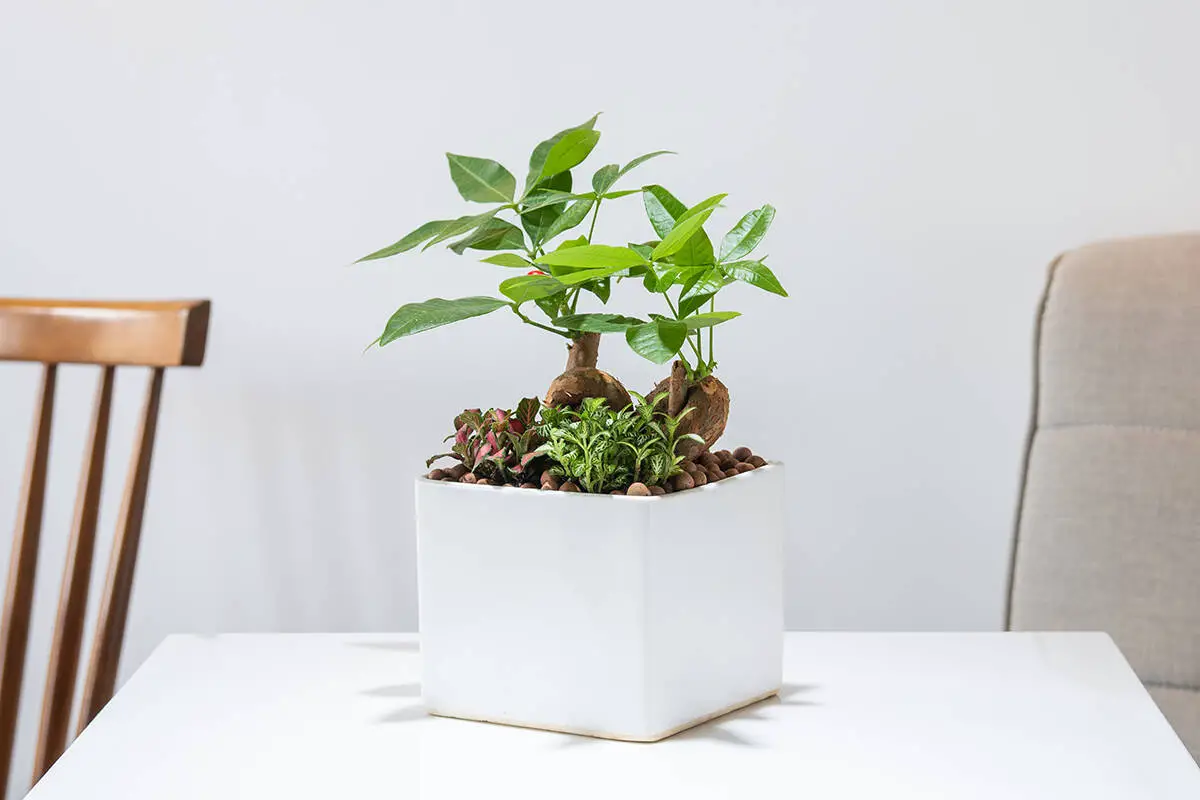
Pachira aquatica, commonly known as the Money Tree, is a drought-tolerant houseplant. This plant features a distinctive braided trunk and shiny green leaves.
Caring for your Money Tree involves placing it in indirect sunlight and watering it sparingly. Over-watering can harm the plant. Instead, let the top soil dry out between watering sessions. This approach helps mimic the plant’s natural dry forest habitat.
The plant can purify your indoor air. It filters out common pollutants found in homes. The Money Tree is also pet-friendly, posing no harm if your curious cat or dog takes a nibble.
Pachira aquatica grows to a manageable size indoors, which suits small spaces. Trim the leaves to shape the plant and promote new growth. Such simple care ensures your Money Tree remains healthy and attractive.
Schlumbergera (Christmas Cactus)
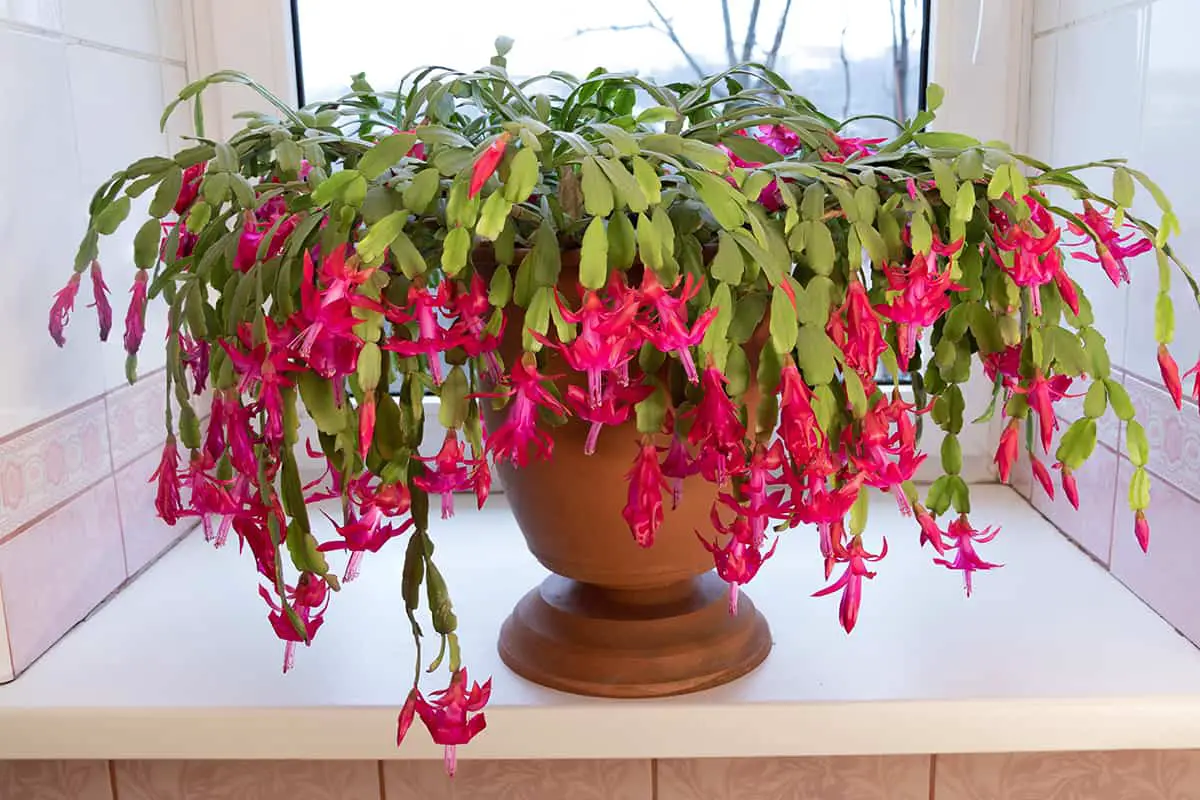
Schlumbergera is a popular choice for indoor gardeners. Your Christmas Cactus thrives with minimal water and adapts well to typical home environments. It originally grows in the rainforests of Brazil.
Christmas Cacti have segmented leaves and bright flowers. They bloom in winter, adding color to your home during cooler months. Despite its name, the Christmas Cactus is drought-tolerant. It can store water within its fleshy leaves. Keep your plant in a place with indirect sunlight. This mimics its natural habitat under forest canopies.
Proper care for your Christmas Cactus involves well-draining soil and sparse watering. Avoid overwatering to protect the roots from rot. Your plant is also easy to propagate. Simply take a short segment and place it in moist soil to start a new plant.
Peperomia Spp.
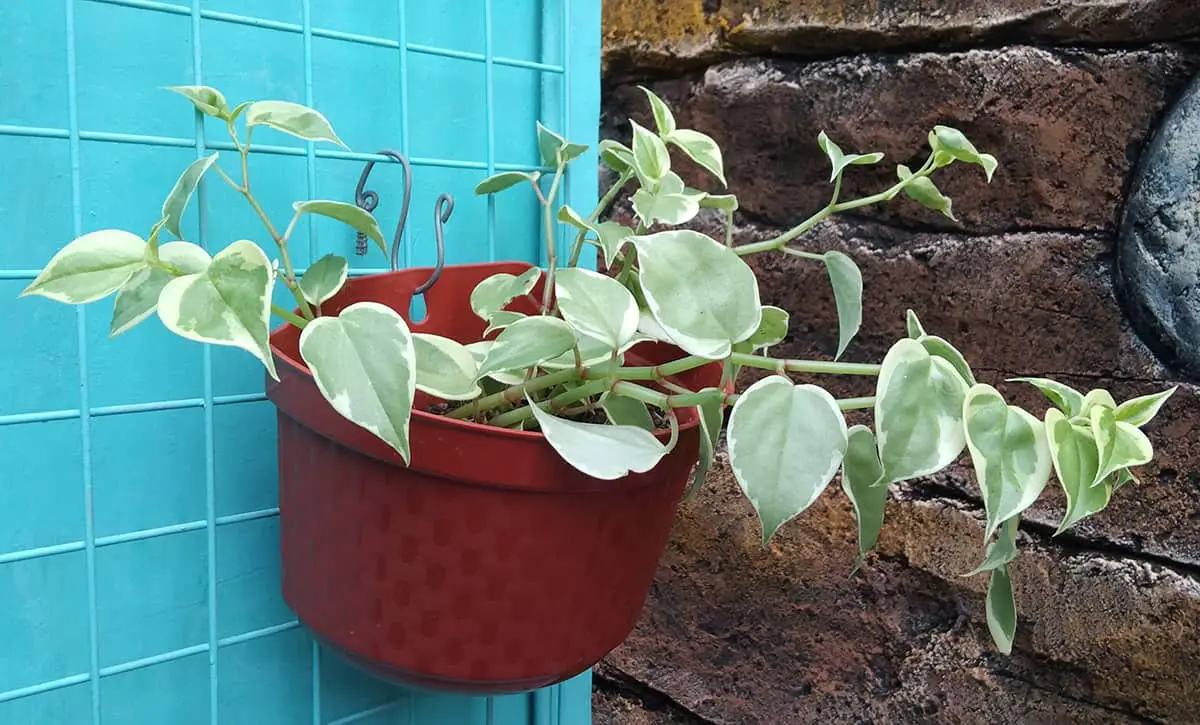
Peperomia plants thrive with minimal water, thanks to their drought-tolerant characteristics. They are well-suited for beginners or anyone seeking resilient houseplants.
These plants belong to a large tropical genus, Peperomia. Their care is straightforward. Provide them with well-drained soil and occasional watering. They handle neglect better than over-attentiveness.
Varieties like Peperomia serpens are perfect for hanging baskets. They showcase attractive foliage and a trailing habit. Similarly, Peperomia caperata offers textured leaves. These plants adapt to medium-light conditions, such as indirect sunlight.
For those seeking plants that are safe for pets, Peperomia is a smart choice. It’s non-toxic for cats and dogs. This makes it a worry-free addition to pet-friendly homes.
Agave Spp.
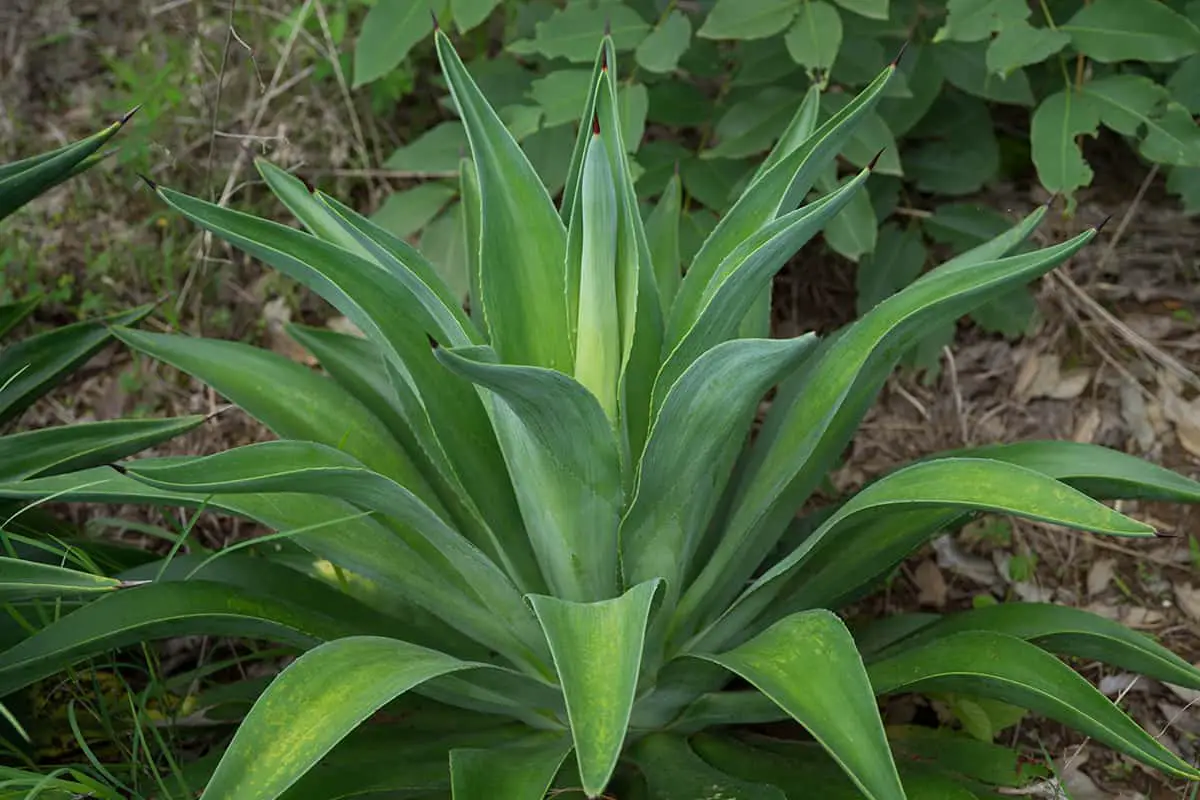
Agave plants make ideal houseplants for you if you live in a dry area. They need minimal water to thrive, saving you time and resources. These succulent plants hail from arid regions, mainly Mexico and the southwestern United States. They are hardy and designed to withstand hot and dry conditions, perfect for sunny spots in your home.
Agaves grow well with plenty of sunshine. They prefer a location that gets as much direct sunlight as you can provide. While they are drought-tolerant, they still benefit from regular watering and fertilizer during the summer.
These plants have a striking appearance, with spiky leaves that add drama to your indoor space. Agave’s leaves can have a range of colors from green to blue-gray. They have sharp spines on the edges, so handle them with care. When planting agaves, be aware that they may contain toxic sap.
Flowering of agave within your home is unlikely, as it is rare in indoor conditions. This doesn’t detract from their appeal, as the foliage alone makes a bold statement.
Epiphyllum (Orchid Cactus)
Epiphyllum, also known as the Orchid Cactus, is a resilient houseplant well-suited for dry environments. It’s a tropical plant that you can grow outdoors in zones 10 and 11 or inside as a unique hanging plant. Your Epiphyllum will thrive indoors with the right care.
This plant demands minimal watering. It prefers temperatures between 45 and 70 °F and adapts well to indoor environments. You should keep it in a stable container, as it can grow up to 10 feet tall. Ensure the pot remains heavy enough to support the plant’s size.
During the spring and summer months, feed your Orchid Cactus with a balanced fertilizer once a month. This will promote healthy growth. However, don’t overdo it – too much fertilizer can harm the plant.
In terms of lighting, place your Epiphyllum in an area with bright, indirect light. Direct sunlight can be too harsh, but it does need a good amount of light to bloom beautifully.
Gasteria
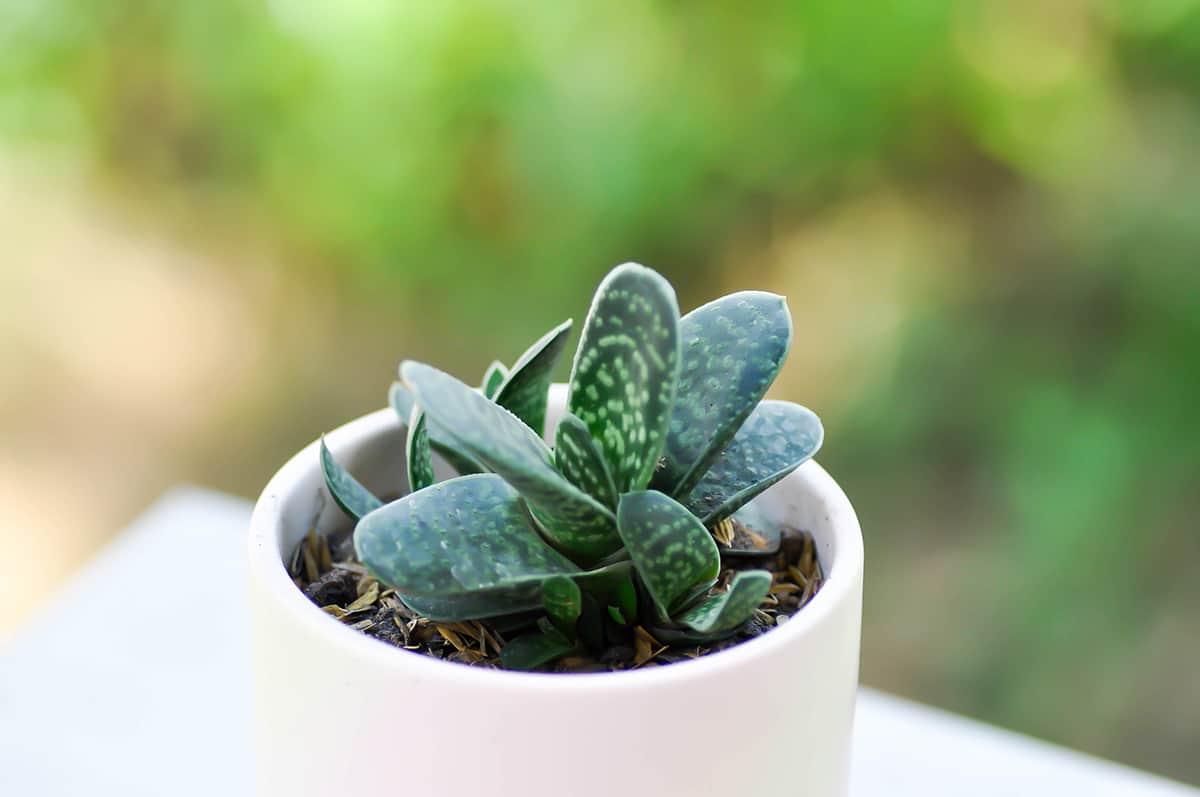
Gasteria plants are succulents you’ll appreciate for their drought tolerance. Native to South Africa, they adapt well to indoor environments. These hardy plants possess thick, fleshy leaves that form a rosette, making them both attractive and resilient.
Your Gasteria will need little water. The leaves store moisture, allowing the plant to go long stretches without watering. Bright, indirect sunlight suits them best. Too much direct sun can damage their leaves.
Gasterias are known for their distinctive appearance. Their leaves have a rough texture with white spots or stripes. These plants typically stay under 10 inches tall, making them perfect for small spaces.
During winter and spring, Gasteria may produce unique, tubular flowers. These flowers add charm to the plant while still being low maintenance.
To ensure your Gasteria thrives, plant it in a well-draining soil mix. Standard cactus or succulent potting mix works well. Be careful not to overwater, as this can lead to root rot.
Rhipsalis Baccifera (Mistletoe Cactus)
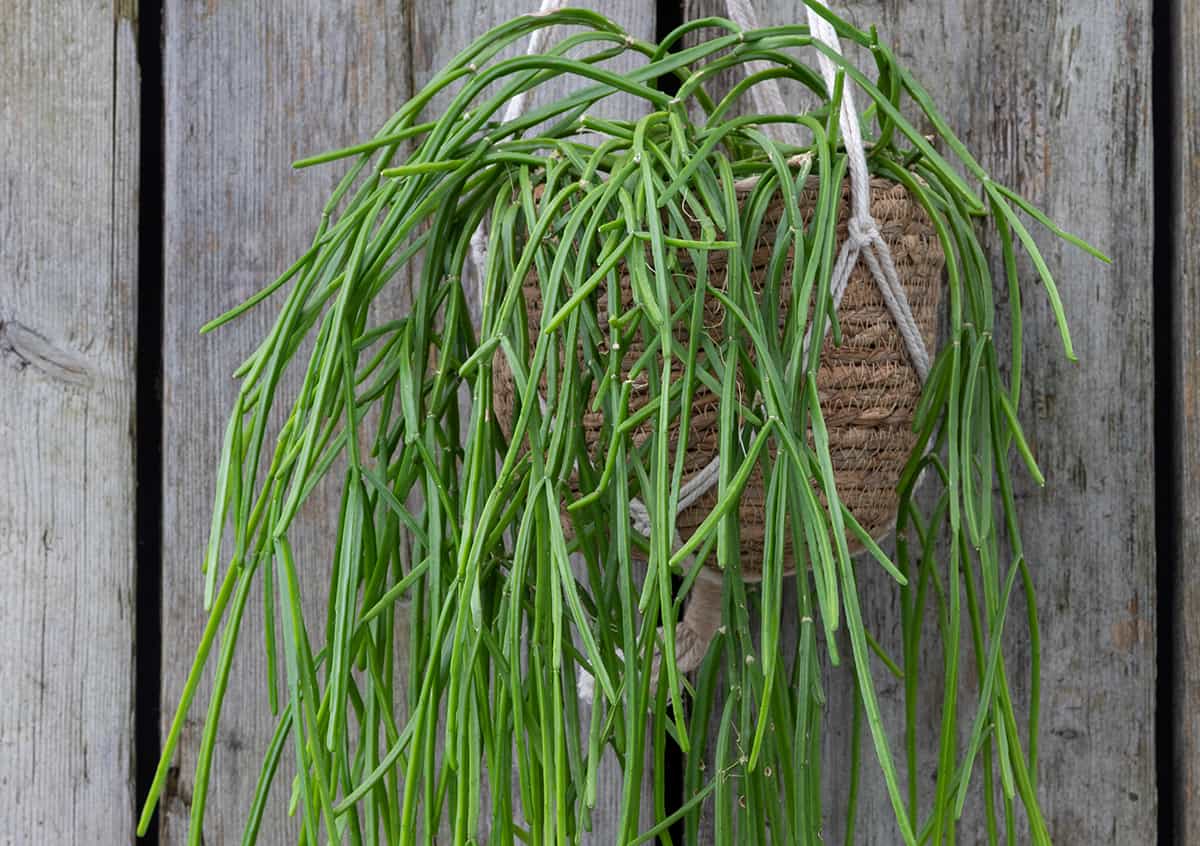
Rhipsalis Baccifera, commonly known as the Mistletoe Cactus, doesn’t need much water to thrive. You’ll enjoy its low-maintenance nature because it requires minimal care. Place it in your home, and it will adapt to the humidity indoors.
Your Mistletoe Cactus prefers bright, filtered light. Ensure you don’t expose it to direct sunlight to prevent stress on the plant. Its natural habitat is shaded forests, not desert climates. Filters sunlight is ideal for this cactus.
The plant produces flowers and berries under appropriate conditions. These add a surprising splash of color to the green, hanging stems. The Mistletoe Cactus can reach up to six feet long in ideal growing conditions. Grow well as a houseplant on account of its trailing growth habit.
Overwatering is a common issue with houseplants. But you won’t have that problem with the Mistletoe Cactus. It’s drought-tolerant. This means that you should let the soil dry out completely before watering again. Managing water efficiently is essential for its health.
Adenium Obesum (Desert Rose)
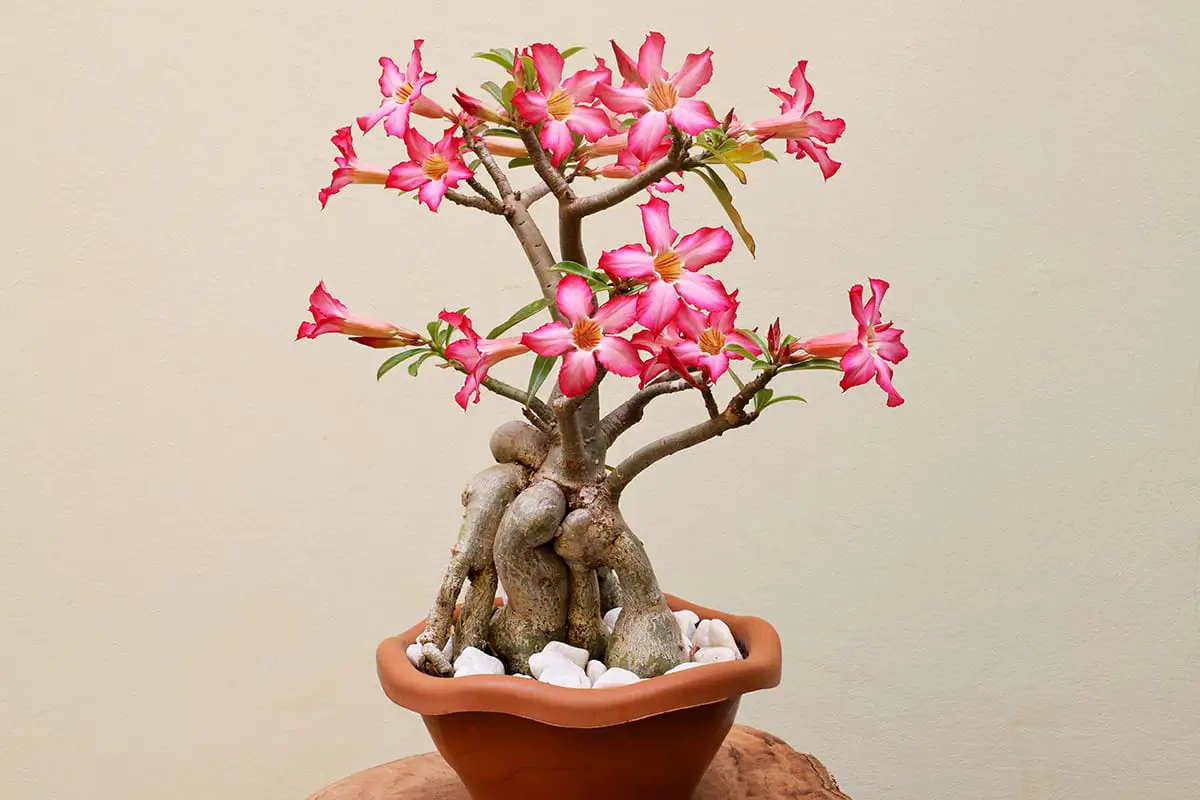
Adenium obesum, known as the Desert Rose, thrives in dry conditions. It’s a fitting choice for your home if you seek drought-tolerant greenery.
Adenium obesum has a unique appearance. It features a thick, often twisted base called a caudex and gray-green branches. The plant’s structure stores water, aiding its survival in arid environments.
Bright and showy flowers adorn the Desert Rose. They can add a tropical touch to your space. Ensure they receive ample sunlight, as this promotes flowering.
Caring for your Desert Rose involves minimal watering. Over-watering can harm the plant. So, let the soil dry out between waterings.
Remember, the Desert Rose can grow large in its native habitat. But indoors, it remains comfortably small. Careful pruning can help maintain its size and shape.
When colder weather arrives, protect your plant. The Desert Rose is not frost-hardy. So, you should move it indoors to avoid cold damage.
